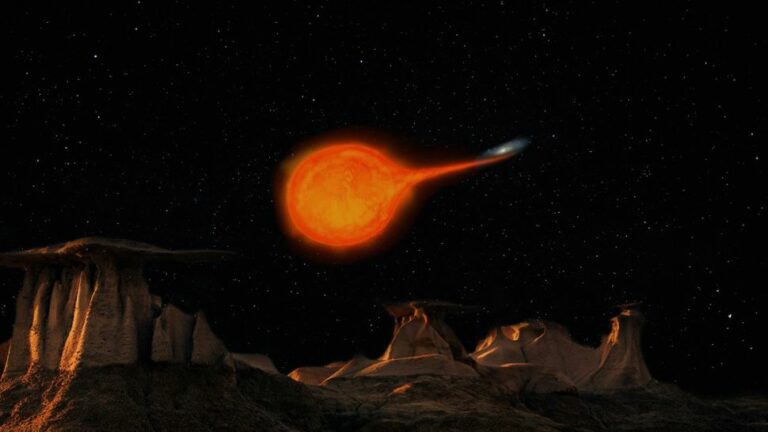Using a novel approach, scientists have discovered extraterrestrial worlds surrounding unusual star pairings.
The new technique depends on disturbances in the material being fed from one star to another as a third body orbits a binary pair.
Astronomers may soon be able to find exoplanets around unusual binary star systems known as cataclysmic variables using a novel method.
Two stars make up such systems, and they circle one another so closely that the bigger star gives mass to its smaller partner. Before descending to the receiving star, this material condenses into a small, brilliant accretion disk. The flow of this material can be disturbed and the brightness of the disk altered by a third body circling the pair of stars, such as a planet. This disturbance is crucial to the new exoplanet detection technique created by a team lead by Carlos Chávez, a researcher at the Autonomous University of Nuevo León in Mexico.

In a statement, Chávez stated that “our work has demonstrated that a third body may disturb a catastrophic variable in such a way that can trigger fluctuations in brightness in the system” (opens in new tab). Both the very lengthy periods that have been observed—between 42 and 265 days—and the intensity of those brightness fluctuations may be explained by these disturbances.
Numerous planets have been detected orbiting other stars since the first exoplanet, or planet beyond the solar system, was discovered in the 1990s. However, the majority of these planets revolve around red dwarf stars or tiny but energetic sun-like stars.
Scientists are looking for ways to find planets orbiting more unusual stars, such as pulsars with their intense light emissions or this kind of system, known as a cataclysmic variable, in order to better comprehend planetary populations.
The sun will leave behind a hot stellar remnant when it runs out of hydrogen and its core collapses in around 5 billion years. Cataclysmic variables frequently consist of compact stellar remnants, such as super-dense neutron stars or white dwarfs.
A cool red dwarf star, the smallest form of main sequence star, is joined by a white dwarf star that is around the size of Earth in one typical arrangement of these systems (one that is still fusing hydrogen to helium in its core). However, these phenomena are not named catastrophic by accident: The white dwarf may suck material from the red dwarf in this kind of collaboration.
When compared to ordinary white and red dwarf stars, the material that forms an accretion disk as it flows between stars shines brilliantly. However, a faint third body orbiting the binary pair, such as an exoplanet, may have an impact on the rate of material transfer and, therefore, the brightness of this accretion disk. Therefore, the researchers estimated the mass of the third body and its orbital distance from the inner stars using the variations in brightness of four cataclysmic variable systems.
According to Chávez’s findings, two of the four systems we looked at appear to be orbiting objects of planetary masses.
The team’s findings were published online July 5 in the journal Monthly Notices of the Royal Astronomical Society(opens in new tab).
Do not forget to share your opinion with us to provide you with the best posts !




0 Comments